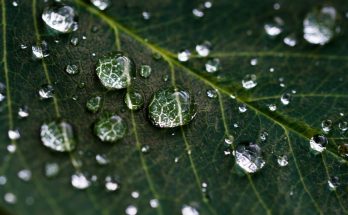This “save water essay” delves into the economic benefits of water conservation, showing how saving water boosts economies and supports industries. It shares success stories and statistics on cost savings from efficient water use, highlighting technologies like drip irrigation. The essay makes a strong case for water conservation as a smart economic strategy for sustainable growth.
Wealth in Water – Economic Insights on Saving Water – 1000 Words Essay
In the heart of California’s agricultural belt, the economic toll of the 2014 drought reached a staggering $2.2 billion, with over 17,000 jobs lost. This stark figure lays bare the profound economic impact of water scarcity, underscoring the fact that water is not merely a drop of life but a wellspring of economic vitality. Across the globe, water fuels industries, nurtures crops, and sustains communities, forming the backbone of economies both large and small.
Yet, as essential as it is, water remains a finite resource, one that is increasingly under threat from overuse and climate change. The economic narrative of water is a tale of two realities- on one side, the cost of its abundance, squandered through inefficiency and waste; on the other, the high price of its absence, measured in lost crops, jobs, and economic downturns.
This essay delves into the economic tapestry woven by water conservation, unravelling how the prudent use and management of this vital resource can lead to substantial financial savings and underpin sustainable economic growth. As Benjamin Franklin wisely noted, ‘When the well’s dry, we know the worth of water.’ In the context of today’s global economy, this adage rings truer than ever, inviting us to reconsider our relationship with water not just as stewards of the environment but as architects of our economic future.
Economic Costs of Water Scarcity
Water scarcity isn’t just about not having enough water; it also costs a lot of money. The World Bank says that by 2050, some places could lose up to 6% of their money because there’s not enough water, partly due to climate change. Droughts, which happen more often when there’s not enough water, are really bad for farming. This is important because farming needs a lot of water. Places like the American Southwest have lost billions of dollars in farming because of droughts, and this makes food prices go up everywhere.
It’s not just farming that’s affected. Other businesses, like those that make things or produce energy, also have to spend more money. They need to clean water or build new things to get water when it’s scarce. This makes things more expensive to make, which can make prices go up for everyone.
Saving Water, Saving Money
Saving water is like saving money. By adopting more efficient water use practices, businesses and municipalities can significantly reduce their operational costs. Simple measures like fixing leaks in municipal water systems can save millions of gallons of water, translating into substantial economic savings. For industries, reevaluating water-intensive processes and implementing more efficient cooling and cleaning methods can drastically cut water consumption and costs.
Technology Investments
Investing in water-saving technologies is a game-changer for economic efficiency. Smart irrigation systems in agriculture, which use data to optimise watering schedules and amounts, can reduce water usage by up to 30%, leading to lower water bills and increased yield. In urban settings, advanced water recycling and reuse systems turn wastewater into a resource rather than a waste product, supplying industries and irrigation with a cost-effective water source.
These strategies not only mitigate the economic costs associated with water scarcity but also contribute to a more sustainable and resilient economic future. By valuing every drop, we can turn the tide on water scarcity, ensuring that our economies thrive even in the face of this growing challenge.
Case Studies- Success Stories
Singapore- A Model of Water Efficiency

Also Check – Water policy in Singapore
Singapore, with limited natural water resources, has become a global leader in water conservation. Through a comprehensive approach that includes rainwater capture, water recycling, and desalination, the city-state has not only secured its water supply but also turned water into an economic asset. Its innovative water management practices attract global attention, positioning Singapore as a hub for water technology and research, stimulating economic growth and resilience.
Israel’s Agricultural Innovation
Israel stands out for its revolutionary approach to agricultural water use. Despite its arid climate, the country has achieved agricultural abundance, largely due to its widespread adoption of drip irrigation technology. This method delivers water directly to the roots of plants, minimizing waste and maximizing efficiency. The result is a booming agricultural sector that exports high-value crops, contributing significantly to the country’s economy.
Business Examples
- Levi Strauss & Co.- The iconic denim manufacturer introduced its Water<Less™ process, which reduces the water used in garment finishing by up to 96%. This initiative not only conserves water but also reduces production costs, showcasing how environmental sustainability can go hand in hand with economic efficiency.
- Coca-Cola- The beverage giant has committed to replenishing 100% of the water it uses in its beverages and production, achieving this goal through water efficiency, recycling, and supporting watershed protection projects. This commitment to water stewardship enhances its brand reputation and operational sustainability, contributing positively to its bottom line.
Strategies for Economic Water Conservation
Policy and Regulation- Government policies play a crucial role in encouraging water conservation. Incentives for businesses to adopt water-saving technologies, such as tax breaks or subsidies, can accelerate the adoption of efficient practices. Regulations that set standards for water usage in industries and agriculture ensure that water conservation is not just an option but a requirement, driving innovation and efficiency.
Community Initiatives- Grassroots efforts can lead to significant economic and environmental improvements. Community rainwater harvesting projects, for example, can reduce the demand on municipal water supplies, lowering costs for communities and local governments. Educational programs that promote water-saving habits contribute to a culture of conservation, reducing overall water consumption and supporting a sustainable economic model.
As we wrap up our talk, it’s clear that saving water is key not just for the environment but for our economy too. Look at big cities and farming areas, like Singapore and Israel, where smart water use helps make money and protect our planet at the same time. Companies like Levi Strauss & Co. and Coca-Cola show us that using water wisely is good for business and the earth.
The saying “better safe than sorry” really fits here. Ignoring the need to save water can hurt our communities, jobs, and wallets much more than if we start saving now. We all need to act quickly to keep our economy strong and our water safe.
So, let’s all help save water. Support rules that make water use better, push companies to use less water, and try to use less water at home too. If we all do a little bit, we can make a big difference. Let’s remember, in nature’s economy, water is like money and a helping hand. We need to use it smartly and save it for our future.
Essay 1 on Save Water – Nature’s Thirst- The Environmental Call to Save Water
Essay 3 on Save Water- The Social Aspect of Water Conservation
Also Check – Essay on Air Pollution in India- Current Challenges and Future Strategies
Also Check – Essay of Soil Pollution
Also Check – Essay on Air Pollution
Also Check – Also Check – What is the Carbon Footprint in Simple Words? – A Guide for Young Minds
Also Check – Global Warming and Climate Change Essays- Innovative Perspectives and Solutions
Also Check – Essays on Save Earth- 3 Diverse Approaches to Environmental Preservation



